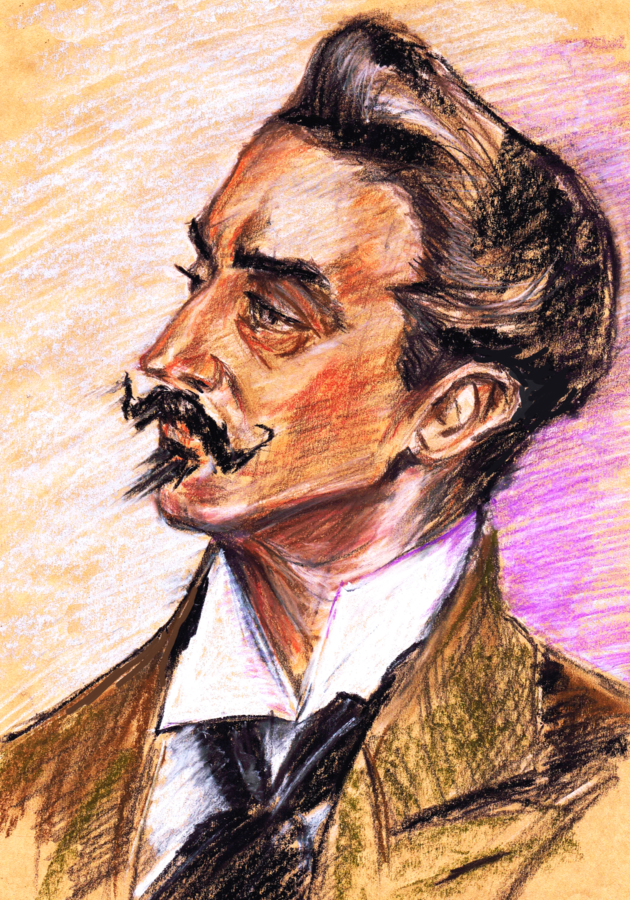An effortlessly graceful right-hand batsman, VVS Laxman – short for Vangipurapu Venkata Sai Laxman – is widely considered one of the best cricket players of the 2000s. To this day, his knock of 281 against Australia in 2001 is habitually described as the greatest test inning in history.
Co-written with R. Kaushik, a veteran and respected cricket writer, Laxman’s autobiography, “281 and Beyond,” encompasses all the ups and downs of his career and covers everything from him watching Mohammad Azharuddin ripping England to shreds in 1992 through his respect for Sachin Tendulkar to, most significantly, the story of that incredible 281.
So, get ready to discover how Laxman became VVS and why he remains one of the very few cricket players in history to hold that dubious distinction of having played 100 Tests without ever going to the World Cup.
The story of 281
Some numbers just stick to the athletes associated with them. Think of 23, and there’s no way you’d think of anyone other than Michael Jordan (and, possibly, LeBron James). Think of Wilt Chamberlain, and the number 100 immediately comes to mind. Barry Bonds is all about 73, and Eric Dickerson about 2,105.
More relevantly to our case, it’s difficult to think of Anil Kumble without thinking about his ‘perfect 10’ against Pakistan in 1999, or of Sunil Gavaskar without harking back to 1983 and his unbeaten 236 against the West Indies. Just as well, at least as far as cricket fans are concerned, the number 281 immediately calls into mind the name of VVS Laxman.
Considering that this extraordinary knock occurred against the Aussies in an all but lost position – deemed by Cricket Monthly “the greatest Test performance of the past 50 years” – chances are, as long as men play and watch cricket, 281 will forever remain the number of VVS Laxman.
“Very Very Special” Laxman.
A little background
Recalled to the national team at the beginning of 2000, VVS Laxman was one of the very few bright spots for India during that disastrous Australian tour (supposedly, had a few nightmares of Glenn McGrath and Shane Warne for the whole year). While all the batsmen struggled to cope with McGrath, Laxman scored 167 in the third (and final) Test match in Sidney. However – and somewhat surprisingly – Laxman decided to return to domestic cricket afterward, firmly believing that the role of opener assigned to him didn’t suit his qualities.
The result? After being let go from the Test team in 1999 due to poor results, Laxman was once again dropped for almost the entirety of 2000. He barely found a spot in the team at the end of the year, just in time for the home series against Australia. Although surmised by the fact that Laxman’s spine required straightening during his epic performance, it is not that known, but VVS was close to not even playing the 2001 Test at Eden Gardens, Kolkata.
A slipped disc nearly benched him, so he requested all the help he could get from the physio, Andrew Leipus. Laxman recalls saying – “‘Tell me you can fix this Andrew.’ There was a salty taste in my mouth. I didn’t even realize I had started to cry. Perhaps it was the sight of a grown man weeping that did the trick.” In retrospect, it’s safe to say it did a lot more than that.
The stuff dreams are made of
“To call Eden Gardens my theatre of dreams is an understatement,” writes in “281 and Beyond” VVS Laxman “It provided the canvas for the picture I wanted to paint, for the dreams I wanted to realize. Dreams that had taken shape long, long ago, when the cricket bug bit me.” But let’s set the scene first.
In the first Test at Mumbai, India’s entire batting lineup – well, all of them except for Tendulkar – capitulated before the mighty Aussies, allowing their bitter rivals their 16th consecutive Test win. And the second match at Kolkata didn’t seem any different – that is until the second evening when VVS Laxman came to bat.
“We scored 171 all out in the first innings, and I was the last man out,” he writes. “We had been asked to follow on. As I was about to remove my pads, John Wright, the coach, came and told me that I would bat at No. 3 in the second innings, and hence should not remove my pads. I was thrilled, for all my life I had batted at No. 3 and I was very comfortable in that position.”
Based on what followed, that has to be one of the greatest understatements in the history of cricket. Though playing against the best attack in the world – on a team 222 runs behind – Laxman produced an extraordinary knock of 281! Rahul Dravid’s stellar supporting role – the two paired up for record 376 – meant that India survived the fourth day of the Test.
On the wings of Laxman’s career-defining performance, his team rose from the ashes to eventually win, not just the Test, but the series! “As I played that wonderful inning of 281,” notes Laxman, “Adam Gilchrist said a few times ‘it’s like the Don is batting.’” Not many would deem this comparison an exaggeration – and that says more than anyone can of how fantastic Laxman could be in his prime.
On becoming VVS
And to think that Laxman might have never become VVS! Born in Hyderabad to noted physicians Dr. Satyabhama and Dr. Shantaram – and, thus, the great-great nephew of Sarvepalli Radhakrishnan, India’s second president – it was only natural for Laxman to toy with the idea of becoming a doctor himself.
“At 17, I had to pick between cricket and medicine.” If the interest in the latter came via his parents, the love for the former Laxman owes to Mohammad Azharuddin’s feats against England. “Watching him rip England to shreds with a great 182 was nearly a personal success for me,” writes Laxman.
Fortunately, Laxman’s uncle, Baba Krishna Mohan, backed his love and not his interest, firmly believing that was talented enough to play for India; that sealed it. There was a condition, though: Laxman had five years to make this dream come true; otherwise, he was back to medicine.
Laxman took this “if” quite seriously and spent the next five years living a life framed within three Ds: discipline, determination, and dedication. It was all cricket for him during those years: no movies, no girlfriends, no evening outings with friends, nothing. He even enrolled in college just so that he could play cricket – “not to study.”
Fortunately, it paid off: Laxman debuted for India’s U-19 team against Australia in February 1994; he ended the series as the leading run-scorer. It was evident that a new star was in the making. The only problem was that he had to accept the opener’s position – one he never enjoyed – much more often than he wanted. After a while, he decided to never again play as an opener. This cost him a place in the national team for a while – and, regrettably, was one of the main reasons that he never got a chance to play in the World Cup.
On the great ones
Unsurprisingly, “281 and Beyond” includes quite a few honest portraits of some of the greatest Indian cricketers to ever grace the willow game. You can find more than a few paragraphs here on everybody, whether the “God of the Game,” Sachin Tendulkar, the destructive batsman Virender Sehwag, and India’s long-time captains, Rahul Dravid and Sourav Ganguly.
Commenting on Dravid’s captaincy, Laxman says that he, always systematic and meticulous, was even more intense as a skipper than as a batsman. “He took everyone’s failures to heart,” he writes, going so far to even feel that the captaincy is not a responsibility, but a burden. This was the reason behind his decision to eventually relinquish the captaincy.
The same holds true for Ganguly, who, feeling that cricket was more than just a game, constantly insisted on both team and individual effort, being OK with a defeat if his team gave its best and lost. However, he too felt the weight of captaincy and, after being stripped of it, came back to the team as a different man.
As for Sehwag’s philosophy of the game – he believed in the idea that a game is won or lost long before it starts. Therefore, he constantly put pressure on the bowlers, playing mind games with them whenever given the opportunity, and coming on top more often than not.
Finally, Tendulkar. Well, you don’t need VVS to tell you that excellence was always floating in his mind. “When he put on the India colors,” Laxman notes, he “grew ten feet tall.” And everybody could see that.
On Greg Chappell
In May 2005, Greg Chappell, the preeminent Australian batsman of the 1970s, was appointed coach of the Indian national cricket team for a 2-year term. “I had been a huge fan of Chappell for a long time,” writes Laxman. “When he was appointed our coach, I was both happy and excited.”
This happiness wouldn’t last long: unfortunately, Chappell was as bad at coaching as he was good at playing cricket. “Brusque and abrasive, highly opinionated and rigid in his thinking,” Chappell had no man-management skills and “quickly sowed further seeds of discontent in an already diffident team.” Often forgetful of the fact that players are the ones who play the game and not the coach, Chappell apparently had favorites and looked after them more than well; the others were “left to fend for themselves.”
As a consequence, India’s team disintegrated before Laxman’s very eyes. “Greg Chappell arrived in India to a groundswell of goodwill and support. He left the team in tatters, having played an influential part in the worst phase of my playing career. Results on the field might suggest that his methods worked to some extent, but those results had nothing to do with our coach... I will always respect Greg Chappell the batsman. Unfortunately, I can’t say the same for Greg Chappell the coach.”
On his early retirement
Laxman always was deemed as a sincere and ever-smiling person; that’s why he was as loved and respected in the dressing room as he was by his fans at the stadium or in front of the TV. It was this love (from the fans, teammates, his family, and especially his wife Sailaja) that got Laxman through some “dark days” of his career, especially his first thoughts about retirement when not being picked up for the 2003 World Cup – or the time under Chappell.
And, then, about a decade later, on August 18, 2012, Laxman suddenly announced his retirement, just a few days before a Test match against New Zealand in his hometown of Hyderabad. Of course, this set off a wave of speculations – many conjectured that Laxman’s retirement was due to his differences with MS Dhoni – resulting in “the first and only controversy of [Laxman’s] cricketing career.”
The truth is – as Laxman explains in his autobiography – he has nothing but respect for Dhoni. He didn’t retire because of him or any other extraneous forces: he did it because of his inner voice. “All my life, my actions had been dictated by this voice,” he writes, “but in conjunction with suggestions from those closest to me. This time, with greater maturity, I had gone entirely by it, disregarding advice from even my father.”
And his father wasn’t the only one to advise against the sudden retirement: Sachin tried to convince Laxman to postpone the press conference too. It was one of the few times he disregarded Tendulkar’s advice: “I told him repeatedly… that my mind was made up… It was not the fairy-tale ending that cricketers dream of, but to me, it was a fairy-tale ending nonetheless because I had stepped down on my own terms.”
But, then again, what else should have one expected? After all, that’s precisely how VVS stepped up as well throughout his career: on his own terms.
Final Notes
Though sports biographies tend to disappoint from time to time, “281 and Beyond” is not one of these cases.
Exciting and nicely written, it covers almost everything you’d expect, shedding some necessary light over Laxman’s sudden retirement, his relationship with Greg Chappell, and VVS’ thoughts on his teammates.
A must-read – and not only for cricket fans.
12min Tip
Despite repeatedly being chosen for the opener’s slot, VVS Laxman didn’t feel comfortable in that position. And to make his stand loud and clear, back in 2000, he decided that he wasn’t going to play as an opener anymore – whatever the cost. For a while, this meant losing his spot in the national team; but then, he returned as a batsman – and the miraculous 281 happened. The lesson is self-evident: focus on what you’re good at, and strive to become the best.




























